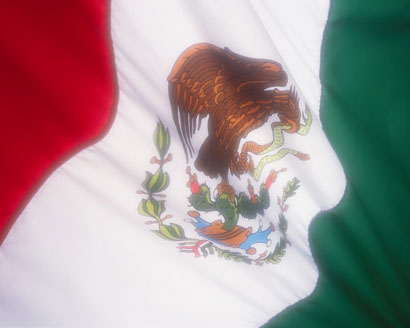

The Mexican National Era of Texas began with the end of the Spanish Colonial rule in 1821. The Spanish rule ended as Mexico won its independence from Spain.
By the end of the 18th century, people in the Spanish colonies were beginning to rebel against the Spanish government. At the same time, Spain was fighting against the French. The Spanish Empire started to crumble.
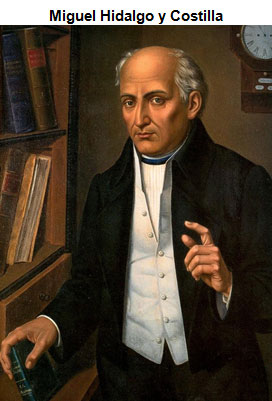
Source: Miguel Hidalgo y Costilla, Xiuhtecuhtli, Wikimedia
On September 16, 1810, a Catholic priest, Miguel Hidalgo y Costilla, ordered that all Spaniards in the town of Dolores be arrested. His famous cry, “El Grito de Dolores,” called the townspeople to arm themselves against Spain. Hidalgo encouraged the people to fight in order to end the nearly 300-year rule of the Spanish in Mexico.
Miguel Hidalgo y Costilla, called the Father of Mexican Independence, led the fight for Mexican independence against Spain. Hidalgo formed an army of nearly 100,000 Mexican farmers and civilians. The army was strong in numbers, but not in skill. Nonetheless, the army marched across Mexico with the goal of seizing Mexico City.

Source: Jose Gutierrez de Lara, History Banter
There were many people who played key roles in the Mexican War of Independence. One individual, Jose Gutierrez de Lara, was important to Mexico and Texas. Gutierrez de Lara acted as a recruiter for Father Hidalgo. Impressed with his ability to communicate well with others, Hidalgo then assigned Gutierrez de Lara to ask the United States for assistance.
In December 1811, Gutierrez de Lara met with U.S. Secretary of State James Monroe and requested a provisional government, supported by the United States, be established in Texas. Gutierrez de Lara was appointed president of the provisional government of Texas in April 1813.
Before the army could capture Mexico, Father Hidalgo was captured and executed by the Spanish in 1811. Many in the peasant army were killed or fled after the death of Father Hidalgo. There were several other Mexican leaders who took the lead in the fight for Mexican independence.
By 1821, the Mexicans gained independence from Spain after a series of lengthy battles.
Click on the link below to see images of the Mexican War of Independence.
In its early years, the Mexican government faced many issues: unstable economy, high unemployment, unproductive farms and ranches, and inexperienced government leadership.
These issues caused the people to move to other locations to look for better living conditions and economic opportunities. The government of Mexico became concerned with the decrease in population, fearing that it would be unable to protect its territories in the northern boundaries.
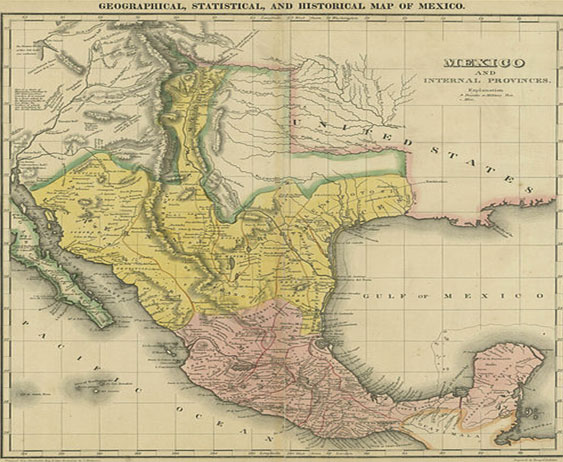
Source: Mexico and Internal Provinces, Karanacs, Wikipedia
Mexico encouraged the immigration of Anglo Americans and Europeans in an effort to defend the northern territories against Indian attacks and foreign invaders.
The Spanish, during its rule in Texas, faced the same issues. Spain wanted to stop the United States government from laying claims on land west of the Mississippi. There were many Americans who had already come to Texas.
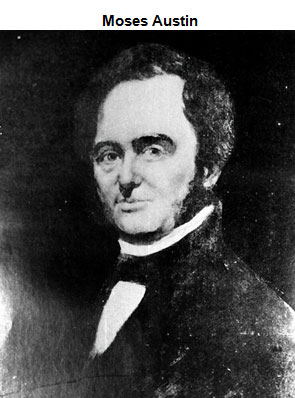
Source: Moses Austin-P83-012-012, Kbh3rd, Wikimedia
The Spanish government granted Moses Austin a contract to bring 300 families to Texas. Upon his death in 1821, the contract was transferred to his son Stephen F. Austin.
Seeking to gain transfer of his father’s contract, Stephen F. Austin traveled to San Antonio de Bexar Presidio to meet with the governor of Mexico. Mexico granted Austin the contract and thus began the Anglo-American settlement of Texas.
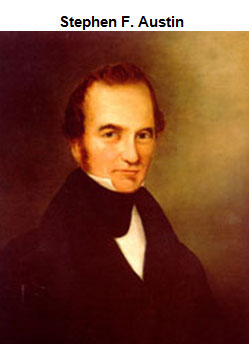
Source: Stephen F. Austin, Makism, Wikimedia
Stephen F. Austin began to recruit colonists to fulfill the land grants and move 300 families to Texas. The colonists had to meet specific requirements to live in Austin’s colony. Read about these requirements below.

According to the land grants, settlers who were only farmers received 177 acres of land. Settlers who raised cattle received 4,428 acres of land. Settlers who were farmers and ranchers received both, a total of 4,605 acres of land.
Reflection: Why do you think that settlers who raised cattle received more land?

In the next section, you will learn more about the political roots of Texas during the Mexican National Era.